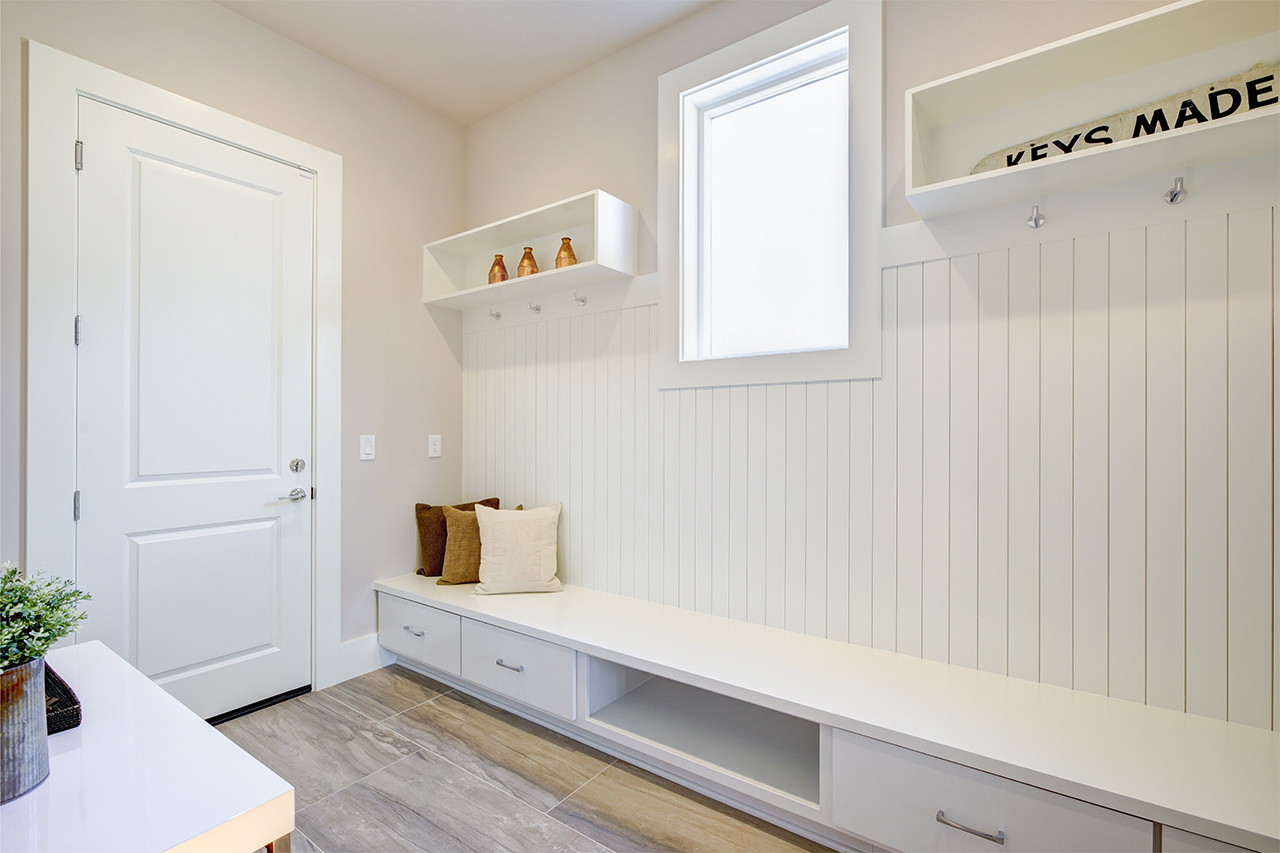How Much Does a Mudroom Addition Cost in 2025?
Building a mudroom addition costs $12,000, with material and installation prices typically ranging from $6,500 to $18,000.


Mudroom additions cost about $100 to $300 per square foot.
The cost is higher than the cost of a traditional home addition, which is $80 to $200 per square foot.
Add-ons like cabinets, a dog-washing area, and premium flooring will raise the price.
This article was created using automation technology and thoroughly fact-checked and edited by HomeAdvisor Editor Ryan Noonan.
Planning a mudroom addition for your home? Expect to spend about $12,000 on average. Some projects cost as low as $3,000 or climb to $36,000, depending on how often you’ll use the space, its size, and the finishes you choose. Budget roughly $100 to $300 per square foot for this hardworking entry upgrade.
Mudroom Addition Cost Factors
Your final mudroom addition bill depends on factors such as your location, the square footage you add, and whether you opt for budget-friendly or premium finishes.
Size
You’ll pay $100 to $300 per square foot for a mudroom—slightly more than the $80 to $200 most homeowners spend on a standard home addition. Costs land at the higher end when the work is more complex, such as second-story expansions or structural changes.
| Mudroom Size (Sq. Ft.) | Conversion | Addition |
|---|---|---|
| 36 | $1,800–$3,600 | $3,600–$10,800 |
| 49 | $2,500–$4,900 | $4,900–$14,700 |
| 64 | $3,200–$6,400 | $6,400–$19,200 |
| 81 | $4,100–$8,100 | $8,100–$24,300 |
| 100 | $5,000–$10,000 | $10,000–$30,000 |
| 120 | $6,000–$12,000 | $12,000–$36,000 |
Labor
Bringing in a general contractor near you keeps the project running smoothly and saves you from juggling subs or permits. Most contractors charge 10% to 20% of the total price, or about $50 to $150 an hour for smaller tasks. If your mudroom addition comes in at $12,000, you’ll likely pay between $1,200 and $2,400in contractor fees.
Additional Mudroom Cost Factors
A no-frills mudroom averages around $12,000, but every extra—think built-ins or a dog-wash station—boosts both the price tag and your space’s everyday usefulness.
| Mudroom Add-On | Average Price |
|---|---|
| Cabinets | $300–$600 per cabinet |
| Dog wash area | $1,000–$2,000 |
| Flooring | $3–$25 per sq. ft. |
| Dog wash area | $1,000–$2,000 |
| Flooring | $3–$25 per sq. ft. |
| Wall features | $1–$40 per sq. ft. |
Cabinets
Custom mudroom cabinets run $300 to $600 apiece—a smart splurge when you want closed storage for backpacks, hats, and pet gear.
Dog Wash Area
A built-in dog-wash station runs $2,000 to $3,000, and adding custom tile or glass pushes that number higher. On a tighter budget, a roomy utility sink can do the trick—provided your pup still fits.
Flooring
Plan on $3 to $25 per square foot for mudroom flooring. Water-resistant, durable picks—like vinyl plank or ceramic tile—stand up to muddy shoes and snow boots and protect your new space.
DIY Mudroom Addition vs. Hiring a Pro
If you’re just turning a closet into a mini mudroom, a confident DIYer can often handle the work—although you might still hire a carpenter for built-in benches or lockers. Building a bump-out or converting a larger space is far more complex. Leave structural tasks to a licensed pro who can pull permits, meet code, and keep both the project and your investment safe.
It’s best to hire a local home builder to ensure code compliance and quality craftsmanship.
How HomeAdvisor Gets Its Cost Data
No place is more important than your home, which is why HomeAdvisor connects homeowners with local pros to transform their houses into homes they love. To help homeowners prepare for their next project, HomeAdvisor provides readers with accurate cost data and follows strict editorial guidelines. After a project is complete, we survey real customers about the costs to develop the pricing data you see, so you can make the best decisions for you and your home. We pair this data with research from reputable sources, including the U.S. Bureau of Labor Statistics, academic journals, market studies, and interviews with industry experts—all to ensure our prices reflect real-world projects.
Frequently Asked Questions
Remodeling an existing mudroom typically costs $50 to $100 per square foot. Within that range, you’ll pay for upgraded surfaces, custom benches, cabinets, and new lighting—features that pack a lot into a compact footprint. Because mudrooms are small, the per-square-foot price often sits higher than it would for larger rooms. Gather at least three bids from licensed remodel pros to be sure you’re getting a competitive rate for your project.
Painting a mudroom runs $250 to $750, or about $2 to $6 per square foot. That price covers prep work, two coats of quality paint, and finishing touches that create a smooth, moisture-resistant surface. Hiring a pro means muddy boots and wet coats won’t wreck the finish—and you won’t spend a weekend taping, cutting in, and rolling tight corners.
For most households, a 6-by-6-foot mudroom hits the sweet spot. If your crew needs extra storage, bump the space up to about 7 by 9 feet. Those dimensions allow built-in benches, cabinets, and hooks while still giving everyone room to move. Choose the footprint that fits your storage goals and daily traffic patterns.
Yes—if you build the mudroom as a bump-out, you’ll need a dedicated foundation to support the new structure. When you convert space inside the existing footprint, the current foundation usually does the job. Planning for this structural element from the start helps you avoid surprises and keep the project on budget.
Porcelain and ceramic tile top the list for mudroom flooring; they’re ultra-durable, water-resistant, and easy to clean. If you’d prefer something different, sealed concrete, stone, or luxury vinyl plank also handle heavy traffic and moisture well. Steer clear of materials that absorb water—like hardwood or cork—because mudroom conditions will shorten their lifespan.



